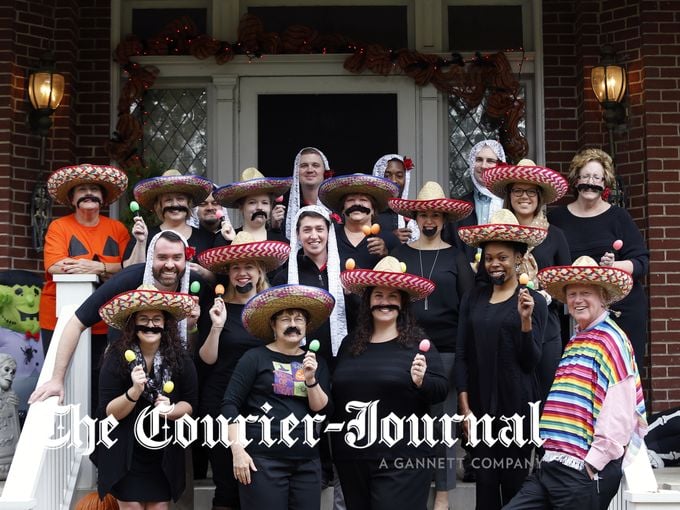You have /5 articles left.
Sign up for a free account or log in.
Colleges and universities periodically debate issues of cultural appropriation, which is when a privileged group adopts part of the culture of an oppressed group and in so doing is perceived to erase the role of the oppressed group, or to denigrate it.
A call for white women at Pitzer College to stop wearing hoop earrings attracted national attention last week. That discussion was nonviolent, although the Latina women who called for white women to stop wearing the earrings have received threats via email.
On Friday, a Hampshire College student was in a Massachusetts court to face charges that she assaulted a member of the women's basketball team of Central Maine Community College when, at a January game at Hampshire, the woman refused to take out braids that she had in her hair -- braids that Carmen Figueroa, the Hampshire student facing charges, and an unidentified additional Hampshire student demanded be removed because they are an example of cultural appropriation.
The Daily Hampshire Gazette obtained court records in the case, and described the police report on what happened after the Maine athletes declined to remove their braids: "When the players did not comply and began to leave the building, Figueroa allegedly initiated a fight towards one of the players. At the same time, another unknown Hampshire College student pulled the hair of a visiting women’s basketball player, causing her to fall to the ground, according to court documents. While the player was on the ground, police allege that Figueroa kicked and stepped on the player, causing injury.
"Another Maine player attempted to protect her fallen teammate, but Figueroa 'grabbed her by the head and threw her to the ground,' according to court documents. The second player suffered scratches and other marks. As coaches broke up the fight, Figueroa attempted to punch at the Maine students and 'was screaming swears and racial slurs,' according to court documents."
Figueroa pleaded not guilty on Friday to charges of disorderly conduct, assault and battery, and assault and battery with a dangerous weapon. She could not be reached for comment.
This is not the first time that cultural appropriation has been an issue at Hampshire. In 2013, a student group that organized a Halloween party for the college withdrew an invitation (but still paid) a band made up of white people who played "Afrobeat" music, amid debate over whether the band was engaged in cultural appropriation. A statement from the college at the time said: "The decision by student planners not to have the band perform was not based on the band's racial identity. It was based on the intensity and tone that arose on the event's planning site on social media, including comments from off campus that became increasingly aggressive, moving from responses to individual student voices to rude, and at times unsettling, remarks."
Central Maine officials did not respond to email messages seeking response.
A spokesman for Hampshire said that he could not comment on anything to do with the case because of student privacy regulations.
Hampshire has a politically engaged, left-leaning student body, and officials there have been stressing the importance of civil debate. President Jonathan Lash in January sent a letter to students in which he cited "principles of discourse" at the college adopted in 1990. They include that "that we refuse to reduce disagreement to personal attacks or attacks on groups or classes of individuals" and that "we value civility, even in disagreement."
And in a letter to students last month, Lash wrote in part, "Constructive conflict and creative discomfort can be a part of learning, but only if they move us toward understanding rather than fear, build relationships rather than isolate, motivate us to create rather than destroy. We make these possible when we live as a community in love and respect, cherishing the skills of listening as well as speaking, supporting as well as opposing, challenging each other while offering compassion, disagreeing without seeking to silence other voices."
On many campuses, issues of cultural appropriation are discussed in the context of symbols that many say promote stereotypes about certain minority groups. This has been part of the discussion over the move by the National Collegiate Athletic Association to ban most of its members from using team names or mascots based on Native Americans or their tribes. Likewise, the issue comes up every Halloween when some students (typically white students) host "ghetto parties," or Cinco de Mayo parties where students and others (generally white people) embrace various stereotypes of Mexicans.
In 2015, the then president of the University of Louisville and his staff members posed in sombreros (below right), prompting widespread criticism (and then an apology from the university).
(below right), prompting widespread criticism (and then an apology from the university).
Some of the current debates -- such as the discussion of hoop earrings at Pitzer College -- go beyond what most people agree are stereotypes. Many condemn ghetto parties, but the Pitzer students who have criticized white women who wear hoop earrings have been subject to widespread criticism from those who say that this is a personal fashion choice that doesn't stereotype anyone. Others, meanwhile, defend the Pitzer students.
Issues of cultural appropriation were also raised in many of the minority student protests during the 2015-16 academic year. The instance that attracted the most attention was the complaint by some Asian students at Oberlin College that Asian food offerings served in college cafeterias were not authentic and amounted to cultural appropriation.
And the allegations about the Hampshire student are not the first time hairstyles have been an issue. At San Francisco State University last year, students debated a confrontation (caught on video, above) in which a black student accused a white student in dreadlocks of cultural appropriation. The white student later responded with a video defending his right to wear his hair in that style.
'Dynamic of Power'
Akil Houston, associate professor of cultural and media studies at Ohio University, writes extensively on hip-hop music and also on issues of cultural appropriation. He said that people frequently misunderstand critiques of cultural appropriation as being about fashion or music and not about "the dynamic of power" that is central to the reactions of "marginalized students."
He said that from these students' perspective, "here I am and I don't have political and economic power, but one of the few places where I do have power is a cultural tradition, and now that's being taken as well." Further, Houston said, there is a pattern of minority people being mocked for their fashion choices, only to have white people who make the same choices be hailed as "trendsetters" or "exotic."
Focusing on earrings or hair misses the point, he said, "that the dynamic of power is the underlying issue."
Kimberly A. Griffin, associate professor of education at the University of Maryland at College Park, studies race relations in higher education. Via email, she said she believes student concerns about cultural appropriation reflect the tense campus environment on racial issues generally -- an environment in which many minority students feel that racism is on the rise.
"My sense is that students are generally frustrated with cultural appropriation, and that the current climate makes it worse and more frustrating," Griffin said. "While they have long experienced marginalization, Latino, black and Native American students are living in campus communities that are perhaps more openly hostile than they once were. They are also managing and navigating political rhetoric and policies that are at often at best marginalizing, and at worst, racist. Living in these times can make cultural appropriation sting more; students may feel like white students want to pick and choose parts of their culture but not stand up for them as people, see themselves as part of a common struggle or support their humanity."




